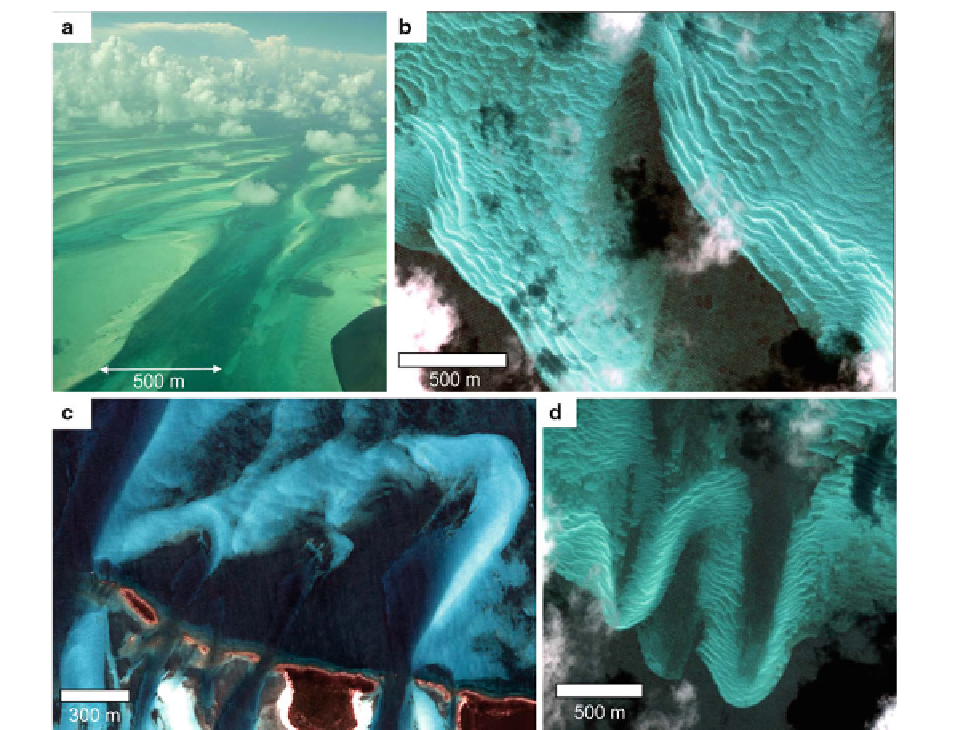Geology Reference
In-Depth Information
Fig. 20.8
Aerial and remote sensing images of barforms. (
a
)
Longitudinal tidal sand ridges, Schooner Cays. Photo from
2/2007. (
b
) Transverse shoulder barforms, Lily Bank. Image
acquired 8/19/2002. (
c
) Ebb tidal deltas, western Abacos. Image
acquired 3/16/2005. (
d
) Parabolic bars, Lily Bank. Image
acquired 8/19/2002 (Images in (
b
) and (
c
) copyright GeoEye,
image in (
d
) copyright DigitalGlobe.com)
occur in shallow (<10 m) water and have very different
geographic boundary confi gurations (for example,
there are no estuary or “river mouth” carbonate sand
examples; see Off
1963
; Wood
2004
) .
Longitudinal tidal sand ridges
are generally straight
(Fig.
20.8a
), although they can have slightly sinuous
crests and bends or even recumbent hooks at their plat-
formward terminations. The long axis of tidal sand
ridges is oriented at a small oblique angle to peak tidal
fl ow, which in many cases is almost normal to the shelf
margin, although sets of tidal sand ridges locally create
a radiating pattern because of the divergent fl ow pat-
tern. For example, in the shoals at the southern margin
of Tongue of the Ocean, tidal sand ridge crests are ori-
ented between 50° and 90° oblique to orientation of
the shelf margin.
Tidal sand ridges can be laterally extensive, reaching
almost 25 km long with 3.5 km spacing. Tidal sand
ridges in the southern TOTO area are the largest in the
Bahamas, with mean length of 10.4 km and spacing of
1.6 km; those from Schooner Cays average 7.9 km long,
and (now stabilized, earlier Holocene) examples from
Lily Bank have mean length of just over 1 km and spac-
ing of ~250 m. In general terms, many tidal sand ridges
broaden on-platform, and can exceed 1 km in width at
their platformward end. Tidal sand ridges can reach up to
~8 m tall, but most are on the order of 3-6 m. Although
Ball (
1967
; echoed by Halley et al.
1983
) suggested that
these features refl ect current speeds exceeding 1 m/s,
recent measurements suggest that velocities amongst
tidal sand ridges in Schooner Cays shoal complex do
not exceed 0.9 m/s (Rankey and Reeder
2011
) .

